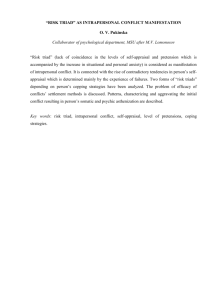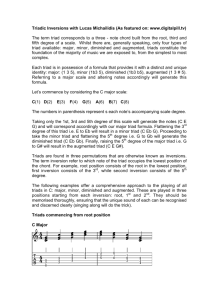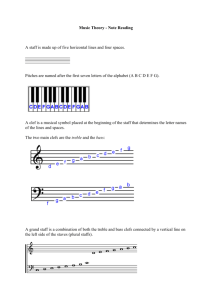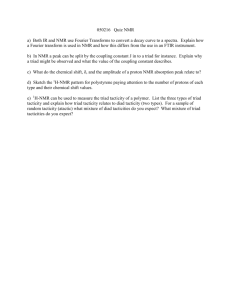Music Theory - Chords & Symbols
advertisement
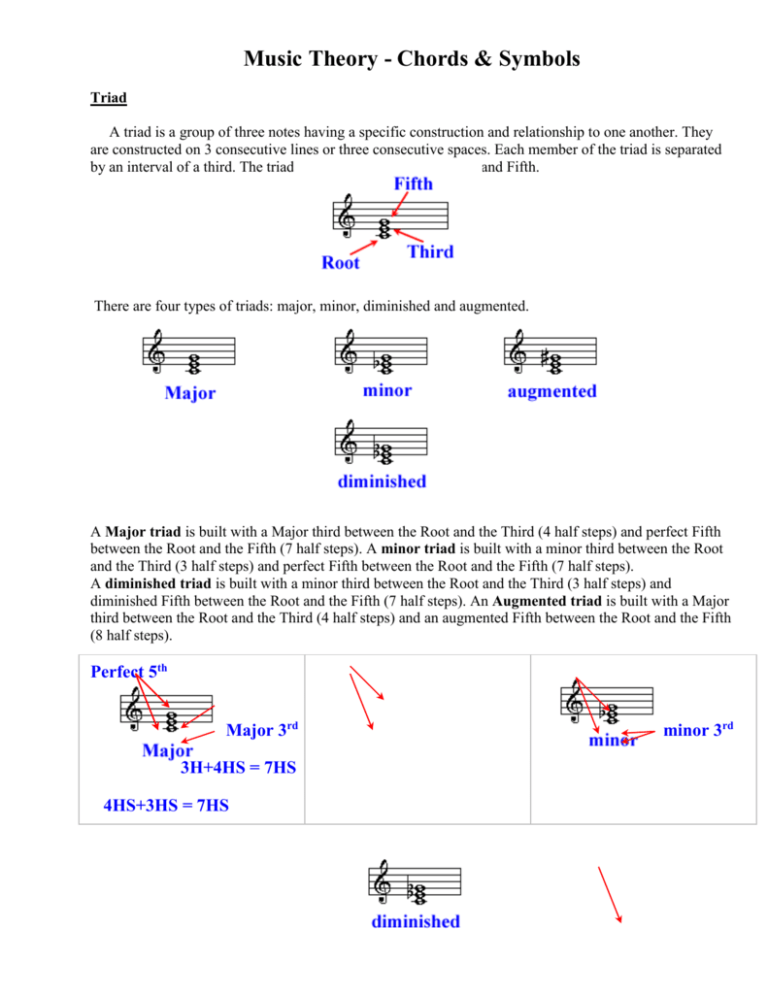
Music Theory - Chords & Symbols Triad A triad is a group of three notes having a specific construction and relationship to one another. They are constructed on 3 consecutive lines or three consecutive spaces. Each member of the triad is separated by an interval of a third. The triad is composed of a Root, Third, and Fifth. There are four types of triads: major, minor, diminished and augmented. A Major triad is built with a Major third between the Root and the Third (4 half steps) and perfect Fifth between the Root and the Fifth (7 half steps). A minor triad is built with a minor third between the Root and the Third (3 half steps) and perfect Fifth between the Root and the Fifth (7 half steps). A diminished triad is built with a minor third between the Root and the Third (3 half steps) and diminished Fifth between the Root and the Fifth (7 half steps). An Augmented triad is built with a Major third between the Root and the Third (4 half steps) and an augmented Fifth between the Root and the Fifth (8 half steps). Perfect 5th Major 3rd 3H+4HS = 7HS 4HS+3HS = 7HS minor 3rd minor 3rd diminished 5th Perfect 5th3HS+3HS = 6HS Augmented 5th Major 3rd 4HS+4HS = 8HS Inversions of Triads All triads have three positions that they can be arranged in. The root, 1st inversion, and 2nd inversion. Root Position Triad If the triad root is in the lowest voice then the triad is in Root Position. 1st Inversion Triad If the third of the triad is in the lowest voice the triad is the 1st inversion. 2nd Inversion Triad If the 5th of the triad is in the lowest voice, the triad is in the 2nd inversion. Figured Bass Figured Bass was developed in the early Baroque period. It was a system of musical shorthand that made the writing of keyboard parts easier. It was customary for the composer to write out the bass line and to place Arabic numerals above or below the figured bass to indicate the harmonies. The keyboard part was called the continuo, which was improvised by the player. In figured bass the Arabic numerals represent the intervals that sound above a given bass part. Certain abbreviations have become well known. Alterations Alterations from the given key signature are indicated by placing an accidental before the Arabic numeral. An accidental, such as a sharp, flat, or natural that appears by itself under a bass note indicates a triad in root position with the third interval above the bass note sharped, flatted or naturaled. Any sharp, flat, or natural sign beside the Arabic number indicates that this interval above the bass note should be sharped, flatted, or naturaled depending on the symbol. #6, b6, 6, 4 #6 b4 Sometimes, composers used a slash through the Arabic number instead of a sharp. They both mean the same thing. Roman Numeral Analysis In the early 1800's, German composers started to use roman numerals to symbolize harmony. Each note in a scale can have a triad or chord built above it. Upper case (Major) and lower case (minor) Roman Numerals are used to indicate the type of chord. I, IV, V are major triads/chords, ii, iii, vi are minor triads/chords, and vii is diminished.

